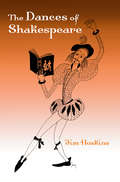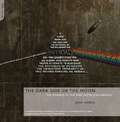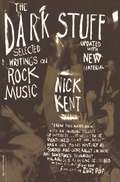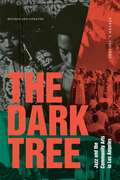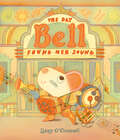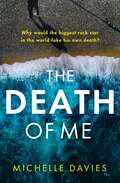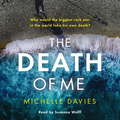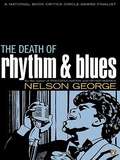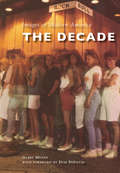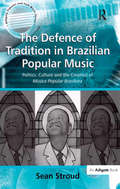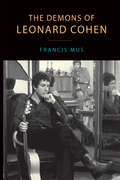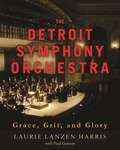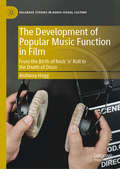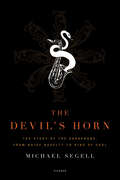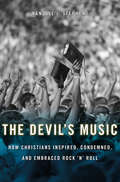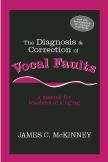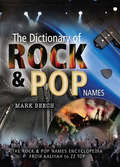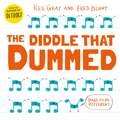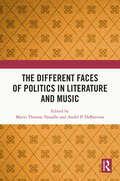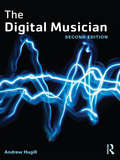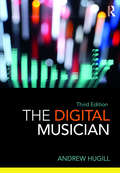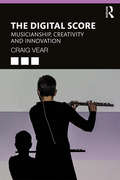- Table View
- List View
The Dances of Shakespeare
by Jim HoskinsFirst Published in 2005. Routledge is an imprint of Taylor & Francis, an informa company.
The Dark Lady
by AkalaA natural storyteller with a vision of his own, THE DARK LADY, Akala's debut novel for teens will enthuse and entertain teenagers and young adults, showing that reading is a true super-power. A PICKPOCKET WITH AN EXCEPTIONAL GIFTA PRISONER OF EXTRAORDINARY VALUE AN ORPHAN HAUNTED BY DREAMS OF THE MYSTERIOUS DARK LADYHenry is an orphan, an outsider, a thief. He is also a fifteen-year-old invested with magical powers ...This brilliant, at times brutal, first novel from the amazing imagination that is Akala, will glue you to your seat as you are hurled into a time when London stank and boys like Henry were forced to find their own route through the tangled streets and out the other side.
The Dark Side of the Moon: The Making of the Pink Floyd Masterpiece
by John HarrisPink Floyd's The Dark Side of the Moon (1973) is one of the most beloved albums of all time. A sonically stunning exploration into dark themes of madness, death, anxiety, and alienation, it has sold a staggering 30 million copies worldwide, and continues to sell 250,000 copies a year. Besides being perhaps the most fully realized and elegant concept album ever recorded, The Dark Side of the Moon was also one of the most technically advanced LPs of its day. It has aged remarkably well and still sounds as contemporary and cutting edge as it did on the day it was released. A perfect blend of studio wizardry and fearless innovation, The Dark Side of the Moon is illuminated by John Harris's exploration of the band's fractured history, his narrative skill, and his deft exploration of the album's legacy, such as its massive influence on bands like Radiohead and Nine Inch Nails. Drawing on original, new interviews with every member of the band-bassist and chief songwriter Roger Waters, guitarist Dave Gilmour, keyboardist Rick Wright, and drummer Nick Mason-The Dark Side of the Moon is a must-have for the millions of devoted fans who desire to know more about one of the most timeless, compelling, commercially successful, and mysterious albums ever made.
The Dark Stuff: Selected Writings on Rock Music
by Nick KentA smart, scathing look at the most hell-bent performers of our time: Here are profiles of everyone you'd expect (and a few you wouldn't)-Brian Wilson, Miles Davis, Jerry Lee Lewis, Roy Orbison, Sid Vicious, and Kurt Cobain. "Kent matters because he wrote about rock better than anyone before or since. " -Tony Parsons, The Daily Telegraph
The Dark Tree: Jazz and the Community Arts in Los Angeles
by Steven L. IsoardiIn the early 1960s, pianist Horace Tapscott gave up a successful career in Lionel Hampton’s band and returned to his home in Los Angeles to found the Pan Afrikan Peoples Arkestra, a community arts group that focused on providing community-oriented jazz and jazz training. Over the course of almost forty years, the Arkestra, together with the related Union of God’s Musicians and Artists Ascension collective, was at the forefront of the vital community-based arts movement in Black Los Angeles. Some three hundred artists—musicians, vocalists, poets, playwrights, painters, sculptors, and graphic artists—passed through these organizations, many ultimately remaining within the community and others moving on to achieve international fame. In The Dark Tree, Steven L. Isoardi draws on one hundred in-depth interviews with the Arkestra’s participants to tell the history of the important and largely overlooked community arts movement of Black Los Angeles. This revised and updated edition brings the story of the Arkestra up to date, as its ethos and aesthetic remain vital forces in jazz and popular music to this day.
The Day Bell Found Her Sound
by Lizzy O'DonnellMatthew Forsythe meets Richard Scarry in this stunning debut that celebrates embracing your voice and finding a place in your community!In a town bursting with music, everyone marches to the beat of their own drum. Except for a quiet mouse named Bell, who doesn&’t yet know what her sound is. She tries honking, tooting, strumming, even tapping, just like she hears her neighbors doing. But none of it feels quite right! None of it feels like Bell. Figuring out her place in the village, it turns out, might just mean finding her own voice first. Lizzy O&’Donnell&’s sumptuous storytelling delicately demonstrates that we find true harmony within our communities when we embrace our truest selves.
The Day John Met Paul: An Hour-by-Hour Account of How the Beatles Began
by Jim O'DonnellWith many new photos and an updated introduction, The Day John Met Paul, a critically-acclaimed Beatles book, reappears in a visually stunning second edition. The book is an hour-by-hour account of the fateful day the two founding Beatles met in July 1957. But it is much more than that: it's a spellbinding story of how fate brought together two men who would radically change the face of popular music, from its look and feel to its sound. Jim O'Donnell, a veteran rock music writer, spent eight years researching The Day John Met Paul. Published in 1996 and translated into several languages, the book was widely praised for its blend of accurate reporting and colorful storytelling. Long out of print, but revered among Beatles fans, the new printing enlivens the text with many well-chosen photos of the Liverpool landmarks--from Strawberry Field to Penny Lane--that played a role in the Beatles' lives and works. The Day John Met Paul chronicles the first "Day in the Life" of the Beatles--a day that changed the musical world.
The Deaf Musicians
by Pete Seeger Paul Dubois JacobsLee is a piano man. Every night, he plays jazz for the crowd. It sounds something like this:<P><P> Plink-a-plink-BOMP-plink-plink.<P> Yimba-timba-TANG-ZANG-ZANG.<P> One night, Lee's bandmates notice something is off. Lee's music comes out like this:<P> Ronk. Phip. Tonk.<P> There's no way to hide it: Lee is losing his hearing. Then Lee discovers sign language. And soon after, he meets Max, who plays the sax. Together they form a new band-the Deaf Musicians. But who will listen to a deaf musician? <P> With The Deaf Musicians, Pete Seeger, Paul DuBois Jacobs, and three-time Coretta Scott King Honor winner R. Gregory Christie present an inspiring story of overcoming obstacles, set to a jazzy score.<P> OO-AH, BE-DOOP, BE-DOOP, OO-AH, YEAH!<P> Winner of the Schneider Family Book Award
The Death of Me
by Michelle Davies'A twisting tale about the dark undercurrents of fame and fortune. You'll read THE DEATH OF ME with your heart in your mouth.' Erin Kelly Is one of music's greatest mysteries about to be solved?'He was a massive star until he did a headline grabbing retreat from the spotlight - but his disappearing act was FAKED. Fans won't be happy when they find out - his reputation was dead in the water.'When Isaac Naylor committed suicide after a teenage fan was found dead in his hotel room, the world thought it had lost one of the greatest rock stars of a generation. Naylor, lead singer of The Ospreys, had been arrested for causing the girl's death and was on police bail when he drowned himself in the sea off the Devon coast.Now, eight years on, music journalist Natalie Glass stumbles across a blind item on a US gossip website that suggests Naylor's death wasn't quite what it seemed - and he might in fact still be alive.But as she delves deeper into what happened, Natalie finds she has a stark choice: give up trying to find out what happened to Naylor or risk her own obituary ending up in print.
The Death of Me
by Michelle DaviesWhen Isaac Naylor committed suicide after a teenage fan was found dead in his hotel room, the world thought it had lost one of the greatest rock stars of a generation. Naylor, lead singer of The Ospreys, had been arrested for causing the girl's death and was on police bail when he drowned himself in the sea off the Devon coast, leaving two notes addressed to his bandmates and his younger brother, Toby, discarded on the beach.Now, eight years on, music journalist Natalie Glass stumbles across a blind item on a US gossip website that suggests Naylor's death wasn't quite what it seemed - and he might in fact still be alive. The item claims he is the mystery songwriter who has for the past year been submitting lyrics to producers in London via his lawyer for other artists to record. He insists on anonymity and the only person who knows his identity is the lawyer.But as she delves deeper into what happened, the plot to stop her intensifies and Natalie finds she has a stark choice: give up trying to find out what happened to Naylor or risk her own obituary ending up in print.
The Death of Rhythm and Blues
by Nelson GeorgeThis passionate and provocative book tells the complete story of black music in the last fifty years, and in doing so outlines the perilous position of black culture within white American society. In a fast-paced narrative, Nelson George’s book chronicles the rise and fall of “race music” and its transformation into the R&B that eventually dominated the airwaves only to find itself diluted and submerged as crossover music. .
The Decade (Images of Modern America)
by Gabby Means Dom DisilvioThe Decade was the birthplace of rock 'n' roll in Pittsburgh, at the corner of Atwood and Sennott. The eclectic bar with parachutes covering the ceiling was home base for local bands such as the Iron City Houserockers, but it also served as a showcase for rising international recording acts, including the Police, U2, the Red Hot Chili Peppers, and the Ramones. Under the shadow of the University of Pittsburgh, The Decade was an oasis of live rock and blues music in the 1970s to the early 1990s. The small venue had wide appeal to bands who felt they could intimately connect with their audience. Owned and operated by Dom DiSilvio, The Decade will forever be a home to many Pittsburghers, and Images of Modern America: The Decade is a home for their stories.
The Defence of Tradition in Brazilian Popular Music: Politics, Culture and the Creation of Música Popular Brasileira (Ashgate Popular and Folk Music Series)
by Sean StroudSean Stroud examines how and why Música Popular Brasileira (MPB) has come to have such a high status, and why the musical tradition (including MPB) within Brazil has been defended with such vigour for so long. He emphasizes the importance of musical nationalism as an underlying ideology to discussions about Brazilian popular music since the 1920s, and the key debate on so-called 'cultural invasion' in Brazil. The roles of those responsible for the construction of the idea of MPB are examined in detail. Stroud analyses the increasingly close relationship that has developed between television and popular music in Brazil with particular reference to the post-1972 televised song festivals. He goes on to consider the impact of the Brazilian record industry in the light of theories of cultural imperialism and globalization and also evaluates governmental intervention relating to popular music in the 1970s. The importance of folklore and tradition in popular music that is present in both Mário de Andrade and Marcus Pereira's efforts to 'musically map' Brazil is clearly emphasized. Stroud contrasts these two projects with Hermano Vianna and Itaú Cultural's similar ventures at the end of the twentieth century that took a totally different view of musical 'authenticity' and tradition. Stroud concludes that the defence of musical traditions in Brazil is inextricably bound up with nationalistic sentiments and a desire to protect and preserve. MPB is the musical expression of the Brazilian middle class and has traditionally acted as a cultural icon because it is associated with notions of 'quality' by certain sectors of the media.
The Demons of Leonard Cohen (Canadian Studies)
by Francis Mus"With my jingle in your brain, Allow the Bridge to arch again" How are we to understand Leonard Cohen’s plea? Who speaks to whom in this oeuvre spanning six decades? In search of an answer to this question this study considers the different guises or “demons” that the Canadian singer-songwriter adopts. The countless roles assumed by Cohen’s personas are not some innocent game, but strategies in response to the sometimes conflicting demands of a “life in art”: they serve as masks that represent the performer’s face and state of mind in a heightened yet detached way. In and around the artistic work they are embodied by different guises and demons: image (the poser), artistry (the writer and singer), alienation (the stranger and the confidant), religion (the worshipper, prophet, and priest), and power (the powerful and powerless). Ultimately, Cohen’s artistic practice can be read as an attempt at forging interpersonal contact. The wide international circulation of Cohen’s work has resulted in a partial severing with the context of its creation. Much of it has filtered through the public image forged by the artist and his critics in concerts, interviews, and reflective texts. Less a biography than a reception study—supplemented with extensive archival research, unpublished documents, and interviews with colleagues and privileged witnesses—it sheds new light on the dynamic of a comprehensive body of work spanning a period of sixty years. Published in English.
The Detroit Symphony Orchestra: Grace, Grit, and Glory (Painted Turtle)
by Laurie Lanzen Harris Paul GansonThe Detroit Symphony Orchestra: Grace, Grit, and Glory details the history of the Detroit Symphony Orchestra as seen through the prism of the city it has called home for nearly 130 years. Now one of America’s finest orchestras, the Detroit Symphony Orchestra began in 1887 as a rather small ensemble of around thirty-five players in a city that was just emerging as an industrial powerhouse. Since then, both the city and its orchestra have known great success in musical artistry for the symphony and economic influence for the city. They have each faced crises as well—financial, social, and cultural—that have forced the DSO into closure three times, and the city to the brink of dissolution. Yet somehow, in the face of adversity, the DSO stands strong today, a beacon of perseverance and rebirth in a city of second chances. This is the first history of the DSO to document the orchestra from its earliest incarnation in the late nineteenth century to its current status as one of the top orchestras in the country. The Detroit Symphony Orchestra tells the story of the organization—the musicians, the musical directors, the boards, and the management—as they strove for musical excellence, and the consistent funding and leadership to achieve it in the changing economic and cultural landscape of Detroit. Author Laurie Lanzen Harris, with Paul Ganson, explores the cycles of glory, collapse, and renewal of the orchestra in light of the city’s own dynamic economic, demographic, and cultural changes. Any reader with an interest in Detroit history or the history of American symphony orchestras should have this book on his or her shelf.
The Development of Popular Music Function in Film: From the Birth of Rock ‘n’ Roll to the Death of Disco (Palgrave Studies in Audio-Visual Culture)
by Anthony HoggThis book offers a unique examination of the development of popular music function in film. It assesses the contribution of popular music to the interpretation of the most significant films, covering the period from rock ‘n’ roll’s initial introduction at the opening of Blackboard Jungle, to the backlash against disco, which followed soon after the release of Saturday Night Fever. By dividing this period into five phases—The Classical American Musical Phase, The British Invasion Phase, The New Hollywood Alienation Phase, The Disco Phase and The Post-Disco Conservative Phase—the book pinpoints key moments at which individual developments occurred and lays out a path of expansion in popular music function. Each chapter offers close analyses of this period’s most innovative films; examines the cultural, historical, technical and industrial factors peculiar to each phase and considers the influence of these upon the specific timing of functional advances.
The Devil's Horn: The Story of the Saxophone, from Noisy Novelty to King of Cool
by Michael SegellIn The Devil's Horn, Michael Segell traces the 160-year history of the saxophone-a horn that created a sound never before heard in nature, and that from the moment it debuted has aroused both positive and negative passions among all who hear it. The saxophone has insinuated itself into virtually every musical idiom that has come along since its birth as well as into music with traditions thousands of years old. But it has also been controversial, viewed as a symbol of decadence, immorality and lasciviousness: it was banned in Japan, saxophonists have been sent to Siberian lockdown by Communist officials, and a pope even indicted it.Segell outlines the saxophone's fascinating history while he highlights many of its legendary players, including Benny Carter, Illinois Jacquet, Sonny Rollins, Lee Konitz, Phil Woods, Branford Marsalis, and Michael Brecker. The Devil's Horn explores the saxophone's intersections with social movement and change, the innovative acoustical science behind the instrument, its struggles in the world of "legit" music, and the mystical properties that seduce all who fall under its influence. Colorful, evocative, and richly informed, The Devil's Horn is an ingenious portrait of one of the most popular instruments in the world.
The Devil’s Music: How Christians Inspired, Condemned, and Embraced Rock ’n’ Roll
by Randall J. StephensWhen rock ’n’ roll emerged in the 1950s, ministers denounced it from their pulpits and Sunday school teachers warned of the music’s demonic origins. The big beat, said Billy Graham, was “ever working in the world for evil.” Yet by the early 2000s Christian rock had become a billion-dollar industry. The Devil’s Music tells the story of this transformation. Rock’s origins lie in part with the energetic Southern Pentecostal churches where Elvis, Little Richard, James Brown, and other pioneers of the genre worshipped as children. Randall J. Stephens shows that the music, styles, and ideas of tongue-speaking churches powerfully influenced these early performers. As rock ’n’ roll’s popularity grew, white preachers tried to distance their flock from this “blasphemous jungle music,” with little success. By the 1960s, Christian leaders feared the Beatles really were more popular than Jesus, as John Lennon claimed. Stephens argues that in the early days of rock ’n’ roll, faith served as a vehicle for whites’ racial fears. A decade later, evangelical Christians were at odds with the counterculture and the antiwar movement. By associating the music of blacks and hippies with godlessness, believers used their faith to justify racism and conservative politics. But in a reversal of strategy in the early 1970s, the same evangelicals embraced Christian rock as a way to express Jesus’s message within their own religious community and project it into a secular world. In Stephens’s compelling narrative, the result was a powerful fusion of conservatism and popular culture whose effects are still felt today.
The Diagnosis & Correction of Vocal Faults: A Manual for Teachers of Singing & for Choir Directors
by James C. McKinneyPopular for more than two decades among college voice teachers and their students, this outstanding, authoritative vocal pedagogy text is an invaluable manual. It thoroughly examines the vocal problems prospective voice teachers will encounter daily in the teaching studio and choral rehearsal. The author's approach is a unique one, based in large part on diagnostic procedures similar to those used by doctors. As each vocal fault is presented, its identifying characteristics or symptoms are stated, its possible causes are discussed, and corrective procedures are suggested. Fourteen male and female voice samples of various vocal faults are discussed in the text, enabling students to better identify basic characteristic sounds associated with each fault. Current and prospective choir directors and voice teachers who need help in improving the vocal sounds of choir members or students will find this practical guidebook to be an ever-present help in time of trouble.
The Dictionary of Rock and Pop Names: Why Were They Called That? From Aaliyah to ZZ Top
by Mark BeechMark Beechs 1998 predecessor, The A-Z of Names in Rock generated over 50 radio interviews, 15 articles, 7 features in nationals and two serializations. This extended and updated version covers more genres than just rock (e.g. pop, punk, indie, reggae, soul, country, blues, folk, jazz, heavy metal, grunge and rap artists and bands) and will appeal to music fans internationally, as well as being the must-buy book for pub quiz fans. With almost 3,000 entries, its a chance to discover why artists chose their names and which ones shouldnt have. An informative and often humorous read, the worlds leading expert on music names (BBC), Mark Beech, is guaranteed another best-seller.
The Diddle That Dummed
by Kes GrayA laugh-out-loud musical story full of hilarious word play and silliness from the author of Oi Frog!, brilliantly illustrated by Fred Blunt.Flinty Bo Diddle is writing a tune for his fiddle. All his diddles have lined up nicely - except for one who keeps going DUM, right in the middle! No matter what he tries he just can't get this diddle to diddle like it's supposed to! A story about standing out from the crowd that will have you in fits of giggles!Kes Gray is the author of the top ten bestselling series Oi Frog and Friends, which has sold 1.4 million copies to date.
The Different Faces of Politics in Literature and Music
by Mario Thomas Vassallo André P. DeBattistaThis book highlights the links between politics and governance and the arts. The essays in the volume show how literature and music have challenged those in power risking political censure. In addition, they also try to delineate how patronage has been used for propaganda, or to stir up national fervour. They focus on the tension and symbiosis between the politician and the artist foregrounding how they have always tried to influence, challenge, and, in some cases, undermine one another. This volume will serve as an indispensable source for researchers and academics in political science, the humanities and performing arts.
The Digital Musician
by Andrew HugillThe Digital Musician is a textbook for creative music technology and electronic music courses. It provides an overview of sound properties, acoustics, digital music, and sound design as a basis for understanding the compositional possibilities that new music technologies allow. Creative projects allow students to apply key concepts covered in each chapter. Topics covered include hardware hacking, live coding, interactive music, sound manipulation and transformation, software instruments, networked performance, as well as critical listening and analysis. Features Readers Guides outline the major topics in each chapter Project boxes for both individuals and groups throughout each chapter Annotated Listening Lists for each chapter, with accompanying playlists on the companion website Recommended Further Reading and Discussion Questions at the end of each chapter Case studies of actual composers, with contributed projects Companion website includes reading lists, links to audio and video, and slides for use in the classroom.
The Digital Musician (Third Edition)
by Andrew Hugill<p>The Digital Musician, Third Edition is an introductory textbook for creative music technology and electronic music courses. Written to be accessible to students from any musical background, this book examines cultural awareness, artistic identity and musical skills, offering a system-agnostic survey of digital music creation. Each chapter presents creative projects that reinforce concepts, as well as case studies of real musicians and discussion questions for further reflection. <p>This third edition has been updated to reflect developments in an ever-changing musical landscape―most notably the proliferation of mobile technologies―covering topics such as collaborative composition, virtual reality, data sonification and digital scores, while encouraging readers to adapt to continuous technological changes. With an emphasis on discovering one’s musical voice and identity, and tools and ideas that are relevant in any musical situation, The Digital Musician is sure to be an invaluable student resource for years to come.</p>
The Digital Score: Musicianship, Creativity and Innovation
by Craig VearDigital technology is transforming the musical score as a broad array of innovative score systems have become available to musicians. From attempts to mimic the print score, to animated and graphical scores, to artificial intelligence-based options, digital scoring affects the musical process by opening up new possibilities for dynamic interaction between the performer and the music, changing how we understand the boundaries between composition, score, improvisation and performance. The Digital Score: Musicianship, Creativity and Innovation offers a guide into this new landscape, reflecting on what these changes mean for music-making from both theoretical and applied perspectives. Drawing on findings from over a decade’s worth of practice-based experimentation in the field, author Craig Vear builds a framework for understanding how digital scores create meaning. He considers the interactions between affect, embodiment and digital scores, offering the first comprehensive and critical consideration of an exciting field with no agreed-upon borders. Featuring insights from interviews with over fifty musicians and composers from across four continents, this book is a valuable resource for music researchers and practitioners alike.
